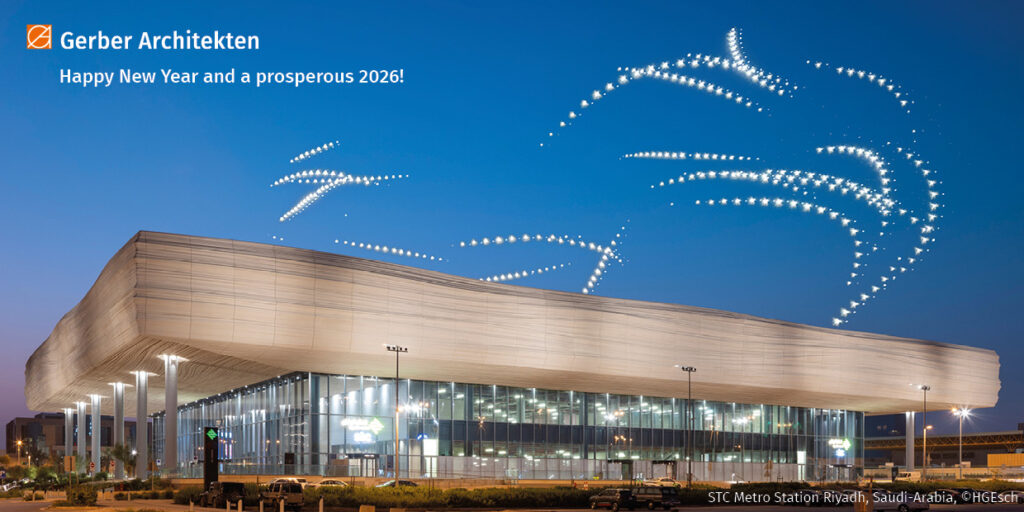
Gerber Architekten wishes you and your loved ones a peaceful Christmas, relaxing holidays, and a healthy year ahead in 2026.
Looking back on 2025, we are grateful for your trust and the enjoyable collaboration. Your ideas and wishes have continually inspired us to develop thoughtful and precise solutions.
We look forward to tackling new projects together and shaping exciting challenges in the coming year.

On December 11, 2025, the topping-out ceremony for the expansion of Christliches Krankenhaus Quakenbrück was celebrated. The extension of the existing hospital will add 110 additional beds for 16 specialist departments. Around 1,500 employees ensure that patients receive excellent care here. Since 1977, the site has been an integral part of Quakenbrück’s healthcare landscape, and the new expansion represents a well-planned step into the future.
The new inpatient building offers patient rooms across three floors. Two light-filled atriums provide daylight and orientation, while the new central main entrance connects all areas and makes arrival more pleasant for patients and visitors. Of particular importance are the optional gowning airlocks, which ensure that patients with infectious diseases can be safely isolated without putting other areas at risk. This guarantees the highest standards of hygiene and safety in everyday clinical operations.
The construction project is being carried out entirely during ongoing hospital operations. This means that patients and staff are barely affected by the construction work, while modern, well-equipped spaces are created at the same time. The expansion strengthens the hospital’s role as a central point of contact for medical care in the region and secures the future of the site as a key component of the regional healthcare infrastructure.
Rendering: © Gerber Architekten
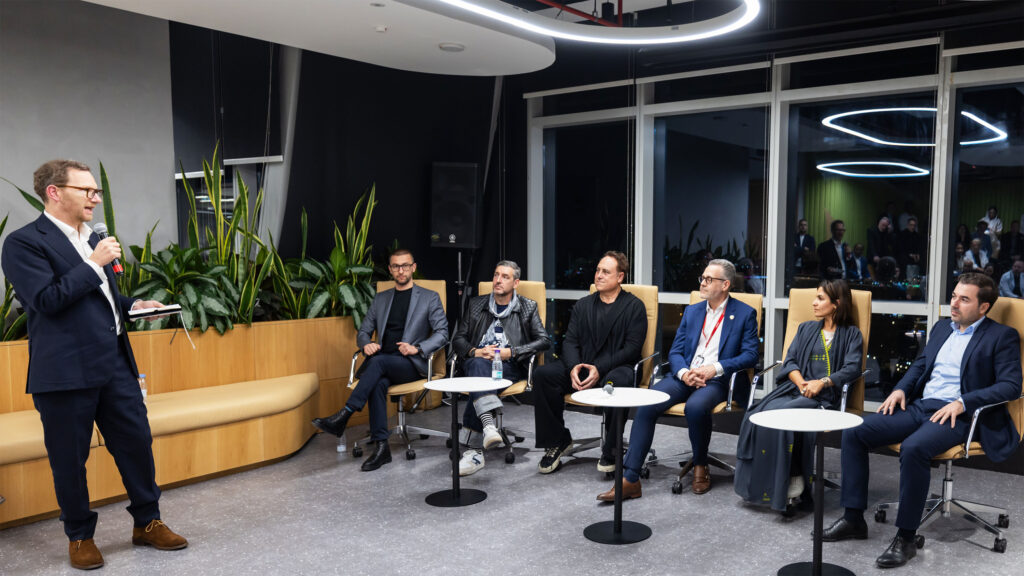
Gerber Architekten took part in an exclusive panel hosted by the Royal Institute of British Architects (RIBA) in Riyadh. Project lead Denis Lacej presented the King Salman Park at Buro Happold and shared insights into the design strategies shaping the project, along with perspectives on working in an environment driven by Vision 2030 and fast development cycles.
The event The Big Picture: navigating the scale and pace of change in KSA was organized by RIBA, the Saudi British Joint Business Council (SBJBC) and the UK Department for Business and Trade (DBT). The goal was to bring together experts from the United Kingdom and the Gulf region to exchange experiences and discuss future approaches to urban development in Saudi Arabia.
Moderated by Chris Foges (Contributing Editor, RIBA Journal) and Hala Lloyd (KSA representative, RIBA Gulf Chapter), the panel brought together representatives from Foster + Partners, LWK+Partners, Allies and Morrison, Oppenheim Architecture and Buro Happold. Gerber Architekten contributed a hands-on perspective on large-scale projects and their implementation.
Photo: © RIBA (from left to right: Chris Foges, Tarek Hassan (Foster + Partners), Kerem Cengiz (LWK + Partners), Chad Oppenheim (Oppenheim Architecture + Design), Ian Redmayne (Buro Happold), Zainab Alireza (Allies and Morrison))
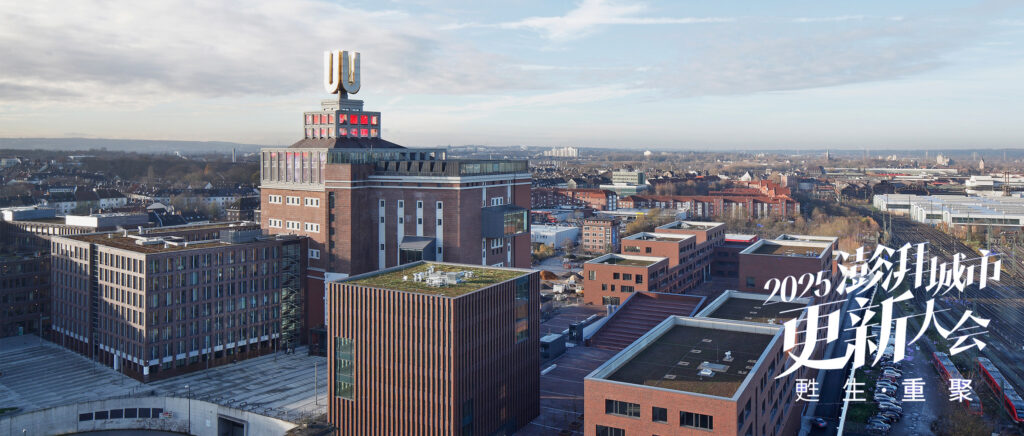
The Dortmunder U – Center for Art, Creativity and Education, designed by Gerber Architekten, has been honored as a “Model Project for Neighborhood Development” at the 5th Urban Regeneration Conference hosted by The Paper. The Paper is considered one of China’s most influential media outlets for urban development and culture. According to the jury, the project demonstrates in an impressive way how urban spaces can evolve into vibrant gathering places that generate lasting urban momentum.
The former grain tower of the Union Brewery was transformed into a cultural venue of roughly 15,000 square meters, bringing together diverse cultural programs and public areas. Together with the Robert Bosch and Robert Schumann vocational colleges, also designed by Gerber Architekten, a compact district for culture, learning, living and working has emerged. This ensemble exemplifies how European cities reinterpret industrial heritage and convert it into long-term drivers for knowledge and creative economies, a strategy that is attracting strong interest in China.
With this award, The Paper acknowledges not only the architectural and urban design quality of the Dortmunder U. The Urban Regeneration Annual List highlights in particular the project’s international role model status for sustainable urban development and the revitalization of former industrial areas.

The Noor Riyadh Festival 2025 opens at the Transfer Station designed by Gerber Architekten, a central hub of Riyadh’s new metro system. The building, whose four quadrants bring daylight nearly 30 meters below street level, evokes the rock strata along Riyadh’s steep slopes with its floating roof structure.
The spacious public plaza in front of the station offers room for socializing and relaxation, simultaneously turning the architecture into the perfect stage for the light art festival. International and Saudi artists transform the building and its surroundings with installations and interactive works into an open experiential field.
Visitors can experience the light installations from November 20 to December 6. The Transfer Station demonstrates impressively how architecture can gain meaning beyond its function: it creates an urban meeting point, links public space and culture, and opens up areas where art, city life, and community can be experienced directly.
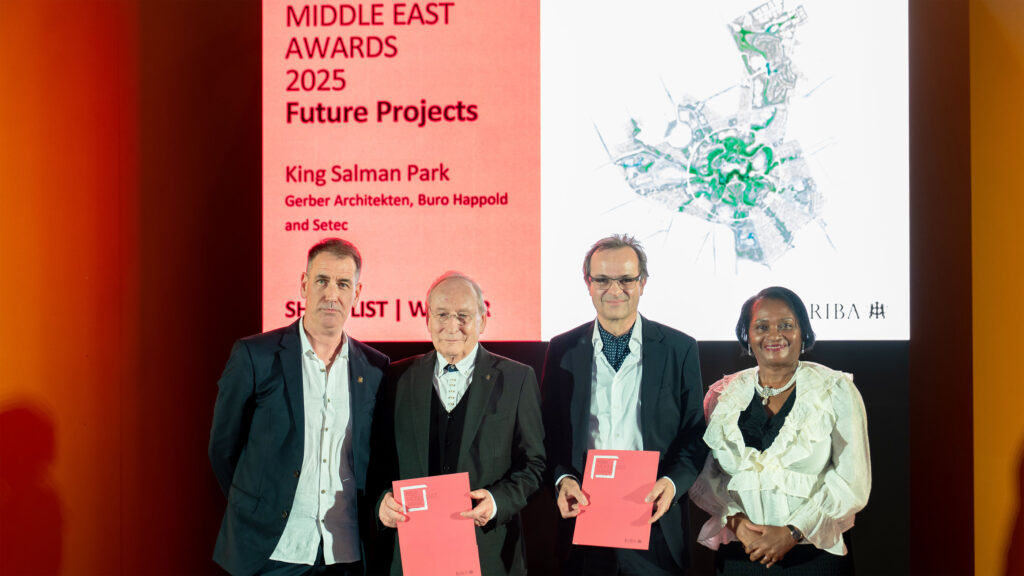
King Salman Park in Riyadh has been honored with the RIBA Middle East Award 2025 – the sole winner in the Future Projects category. The megaproject transforms the former airport site into a 16.7 km² green urban landscape. A joint venture led by Gerber Architekten, together with engineering firms Buro Happold and Setec, is responsible for the project on behalf of the King Salman Park Foundation.
As a key initiative of Vision 2030, the project stands as a benchmark for ecological urban regeneration in arid regions. Based on interdisciplinary research, it focuses on regenerating desert soils, creating sustainable water cycles, and establishing climate-resilient vegetation – a model for urban greening worldwide.
The Royal Institute of British Architects (RIBA) selected nine projects in total that are shaping the future of architecture in the Middle East. The awards ceremony took place on November 7 in the Dubai Design District (d3).
Photo ©RIBA Gulf, from left to right (l–r): Mark Kyffin, Director of Architecture at The Department of Culture & Tourism Abu Dhabi, Prof. Eckhard Gerber, Thomas Lücking, Valerie Vaughan-Dick MBE, Chief Executive Officer at RIBA.

The winners of the RIBA Middle East Award were announced today at Dubai Design Week. King Salman Park is the sole winner in the “Future Projects” category. The transformation of the former airport site in Riyadh into a 16.7 km2 inner-city park landscape is one of the central projects of Vision 2030. It is a prime example of ecological urban regeneration based on biodiversity and climate regulation. It is based on interdisciplinary research that makes it possible to fertilise desert soils, establish a sustainable water supply and plant climate-resilient plants and trees. King Salman Park combines the diversity of urban life with a unique landscape and nature experience. It contributes significantly to increasing the proportion of green space in the Saudi capital and can serve as a blueprint for ecological greening projects in arid areas worldwide. The mega-project is being developed by a joint venture led by Gerber Architects, in cooperation with engineering partners Buro Happold and Setec.
Our thanks go to the King Salman Park Foundation, the international scientists and all the project partners involved, whose commitment and expertise have made this green living space possible.
Further information on King Salman Park can be found on the RIBA website:
https://www.riba.org/explore/awards/international-awards/middle-east-awards/king-salman-park/
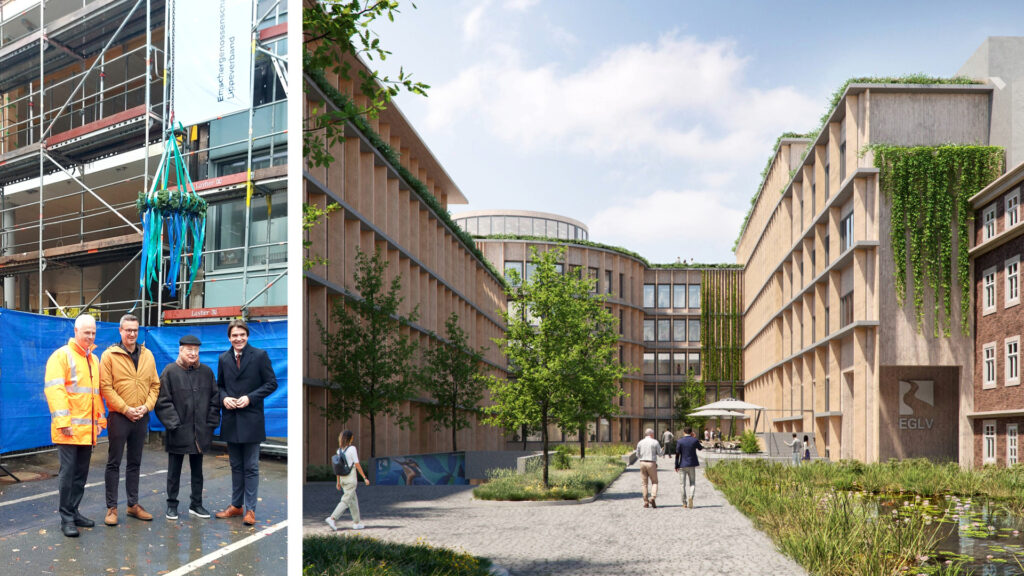
One year after the foundation stone was laid, the topping-out ceremony for the extension of the Emschergenossenschaft and Lippeverband headquarters has taken place.
Gerber Architekten is realising a building ensemble here that extends the listed representative building from 1909 in timber hybrid construction. Board member Prof. Dr Uli Paetzel emphasised in particular the creation of new working environments with variable office constellations. The extension creates flexible structures that enable both individual workstations and group offices and thus respond to the requirements of modern working methods. The former car park has been transformed into a green inner courtyard in which the theme of water can be experienced as a central design element. Generous glass surfaces and a new foyer at the southern corner facing away from the road open up views of the inner courtyard and the surrounding parkland.
An architecturally and functionally significant step that combines history, innovation and environmental awareness in an impressive way.